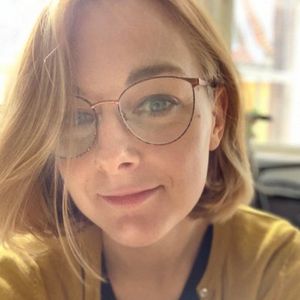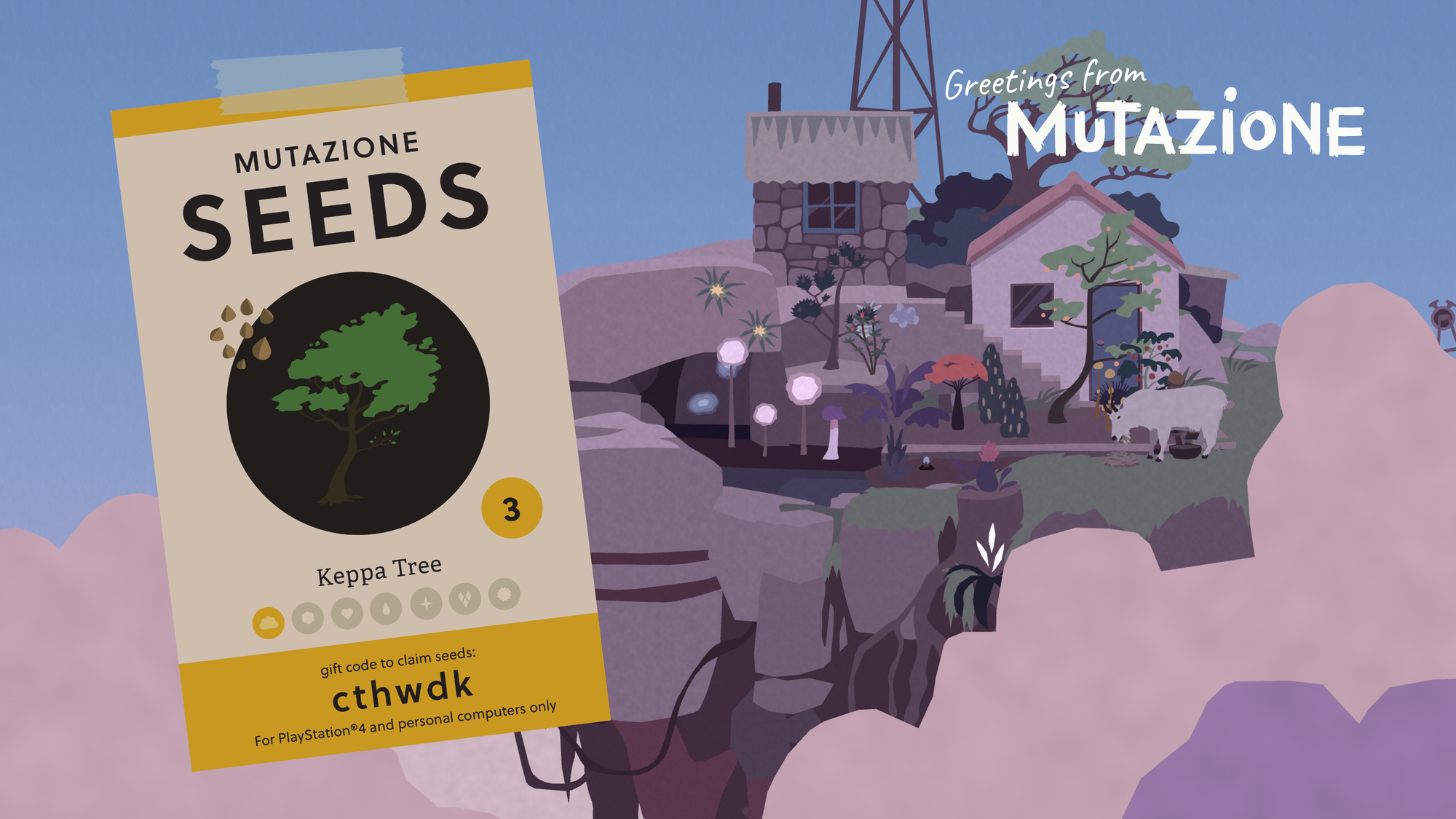
#Craft. Narrative Design Sliding Doors - Gardens & Storytelling in MUTAZIONE.
Please note, this post will contain spoilers for the central 'gardens' puzzle at the heart of Mutazione. It's best read after playing the game.
This is the third post in Hannah Nicklin's #Craft series. In this series of posts Storyteller and Studio Lead Hannah Nicklin will be touching on elements of the craft of storytelling in games. This might be vocabulary, useful exercises, opinion pieces, or in this case, a reflection on a crucial turning point in the direction and therefore narrative design of the game.
Recently, to accompany our mini-series of podcast episodes on the music of Mutazione, Nils has been posting a few deep dives in to the early days of the game. Digging down into all of those small design decisions which led the game – like in Sliding Doors – down different paths, and towards different possibly futures.
Those kinds of early process design decision are often like staring at a slab of clay, and trying to see how you want to sculpt it, what form you want it to take, what you want to build. Nils’ most recent post focuses particularly on the early design decisions behind Mutazione’s generative musical gardens, and is a lovely insight into just that kind of early design decision: buidling up, finding a shape emerge from the material.
I’d like to also focus on the gardens in this post, but here, instead, on a very late design choice, made in the final year before release (2018) – and therefore of a different kind of design decision variety. Not of a revealing of potential by building, but of the bringing into focus the creative vision that you started out with, by cutting. This is a post about the creative potential of down-scoping, of a cut, and a decision that I think defined the kind of storytelling game that Mutazione ended up as, and how it could be as effective (and affective!) as possible.
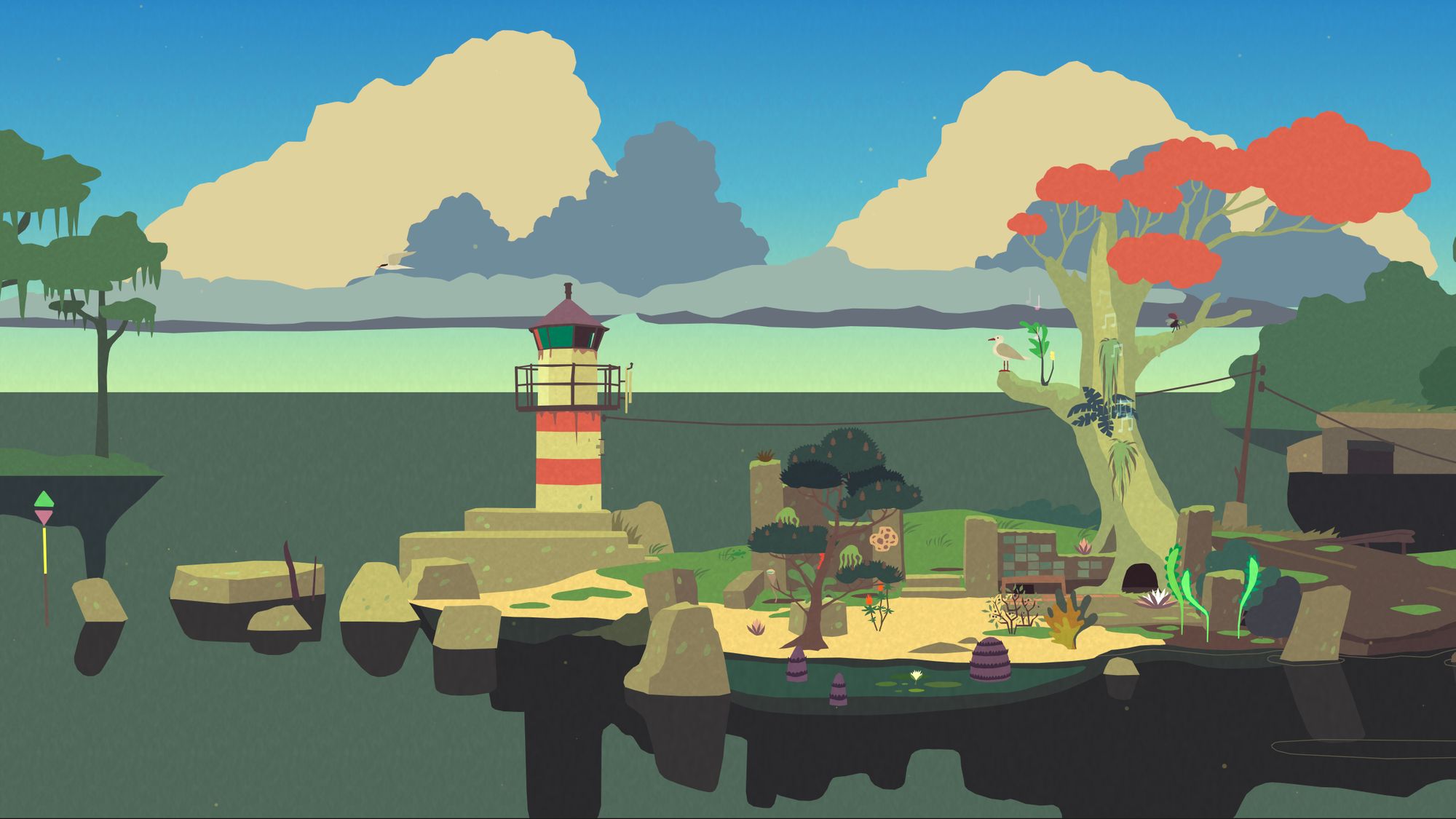
Of Darlings and Game Direction
There are many turning points in design processes where ideas are left on the cutting room floor. And it’s as often because it wasn’t the right feature for the intent/form than because there wasn’t time to finish something. Though there are plenty of decisions made because we didn't have time, too, in Mutazione, just as in any game. Some made the game better. Some just made it so we could finish the game. But cuts made as part of considered and joined-up design processes, in my experience, very rarely make things worse. And personally, as someone who trained as a writer, I love cuts. Beautiful things, that allow you to see the shape of the thing as it is, as others see it, with all your baggage you imagined for it removed. Cuts let you see how to fix what you have left.
Instead of thinking of these kinds of decisions as like building with clay, I like to think of them as like gardening (if you’ll forgive the too literal metaphor). Is your game and storytelling tangled? Lacking in a centrepiece? Hard to read a design, pathway or essential meaning in it? Hard to even identify as intentional? Then you need to cut. All plants are beautiful to someone, it’s context which defines them as weeds. As a good storyteller, there will always be a point where you need to return to the principles of the story and your storytelling, work out what serves it, and cut out what doesn't. Kill your darlings. As Stephen King has it in On Writing: A Memoir of the Craft:
“Kill your darlings, kill your darlings, even when it breaks your egocentric little scribbler’s heart, kill your darlings.” (source)
Although, in game development, it’s not just your darlings that have to die, it’s everyone’s intertwined, interdisciplinary, beautiful little darlings. The decisions and design discussions are most difficult when you are arguing for the culling of others’ darlings. As Narrative Designers and Writers are often brought in after the creative and storytelling vision is laid down, and much of the gameplay and systems will have been designed – to do your job well, you may have to propose a little darling killing field.
I’m beginning to feel uncomfortable about this metaphor. Let’s return to poorly-accented Gwyneth Paltrow and her charismatic Scottish beau John Hannah, consider at how we got the design equivalent of our cool 90s bleach pixie cut. (Zoomers, I’m sorry. Go watch the film trailer to see if that makes more sense).
Because of course, you don't just make cuts. You don't ever just say 'this doesn't work', you always, always, come with a proposal for a solution. That's how you articulate the Sliding Doors moment. With intentionality and deliberation you ask: what game are we making? What game do we want?
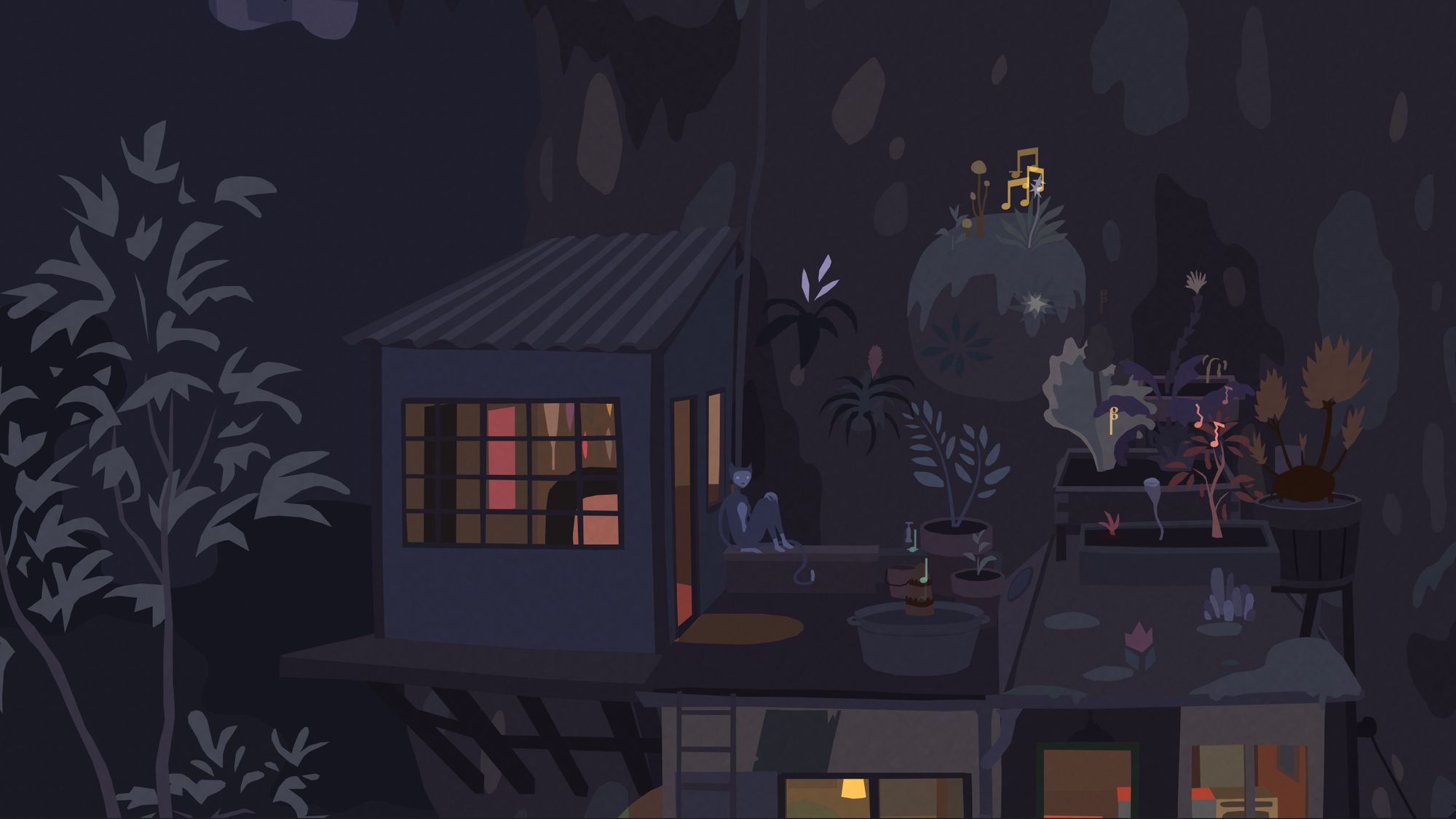
The relationship of the Gardens to the Storytelling was of the major Sliding Doors moments for Mutazione: a key design decision that would have – depending on what our Creative Lead’s final decision was – made a radically different game to the one we ended up with. Neither is better or worse (although it may have found different fans) – just a point where a story proposal demanded we ask the question – “which of these creative directions most align with Nils’ vision for the game”. A proposal which asked, fundamentally:
Is the game about the gardens? Or is the game about the story?
Which comes first?
This had been a bubbling question for a while which I had tried to bring up a few times, but in the midst of trying to make a game whole and finished, these kinds of messages are hard to get across. And the credit of bringing it up should be no means rest at my feet alone – I had been trying to focus us on the question for a while, but also came up in design, gameplay, and was something on Nils’ mind because of all that. Then, finally, the discussion came to a head.
The Question
Before this decision was made the design challenge was that we had these wonderful generative musical gardens, and we had this idea for a world, and a story, and a bunch of characters, but we hadn't quite worked out how to make them work together. There were 7 gardens which could be completed in any order, there was no clear ‘puzzle’ for them yet, and so we weren’t sure how we would lay the clues for them. There was also a whole string of garden-related subplots around medicine mixing – where Kai could encounter members of the community with medicinal needs, and as part of caring for them and learning Nonno’s practice, she could grow and gather plants, and with a Medicine Book, mix medicines to solve their problems – she was to do that in Nonno’s house (you may still notice the mixing materials in the background of his kitchen).
Indeed, when I joined the team, one of the first things I did was painstakingly research and develop a medicinal theory and practice for the world of the game. It combined Nonno’s spiritual practices with good science and therapeutic underpinnings, and mapped all of the Moods of the plants in the game to a medicinal theme, and mapping common ailments, injuries and conditions to recommendations in Nonno’s medicine book recommending treatments. Here’s a couple of screenshots – note that some late design decisions around balancing the sound of the gardens and seeds in the game mean that some of these details will be redundant in the version now available to play. It’s a shame that screenshots of documents isn’t as thrilling as Nils’ screenshots of old concept art, but oh well, that’s the life of a writer!

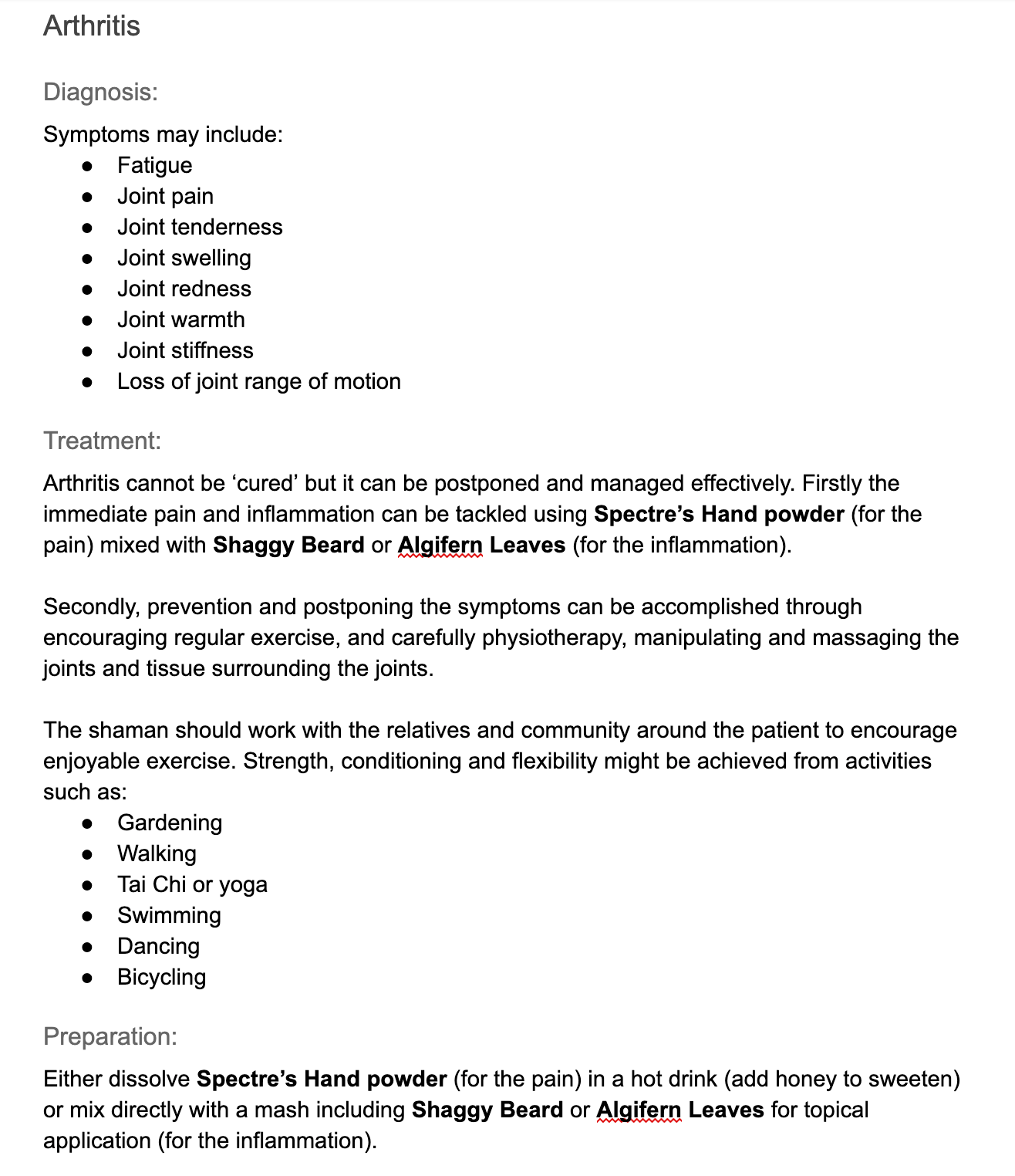
This question of ‘What is the priority, gardens or characters?’ was vital, because while the story could feature gardens, or the gardens could allow a story to emerge, it was vital for the storytelling and design of the game to know which came first. Is the most important thing the ensemble cast of characters – their lives, troubles, secrets and resolution? Or is it about the gardens about the ecosystem. The community of humanoids were often articulated by Nils’ vision as part of the organism which encompasses the gardens, and the question therefore is – are the gardens the way in, or are the community?
If the former, then the gardens should draw you back to the characters, they should solve interpersonal issues, and move the story forward, not offer medicinal puzzles. Kai’s focus should be on the mystery behind the people and their history, not trying to dig up references in a book, find ingredients for mixing. Likewise, if it was the gardens which were the most important thing about the game, everything should come back to them. We should make the medicine mixing important – not just side quests, but the heart of the game. The gameplay in this case would have to involve satisfaction from solutions more than discovery. The characters would be pieces in the puzzle, more than the puzzle themselves.
The Decision
Nils’ decision (indeed, as I’m now finding, the task of Creative Direction is one of endless proposals, discussions and difficult decisions) was that it was the ensemble cast who were the priority. The community. The characters he had pulled out of his head almost a decade ago, fully formed. Who had kept him company as he developed the world, the backstory, the place-ness of Mutazione.
If you’re interested in more details on how I shaped the narrative design of the game around the soap opera, ensemble cast format, check out this Deep Dive I did for Gamasutra. But most simply put, this meant a number of sweeping changes to focus us on the community first, and to pull out the now-identified weeds of our design, so that they could flourish as a backdrop.
I’m not going to go into too much depth – there just isn’t a reasonable blog post length version of that (I’ll write the book one day) – but I thought it might be useful to set out the essential proposal, and some of the key things this decision re-shaped about the storytelling and narrative design of the game (and, in turn, a great deal of the gameplay!).
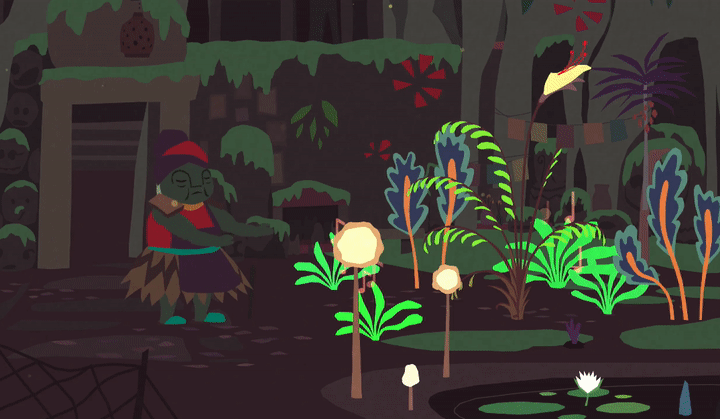
The Solution
That we shape the storytelling around the characters and their lives, and that gardens are a part of that. That each garden would be unlockable and completed on a certain ‘day’ in the game, and that each garden Mood would link to the theme of that day. That the unlocking would be done by a ‘song’ which will enable that day’s Mood’s plants to grow, and that the song would be learned from a member of the community. The storytelling would also be resonant: on the ‘Harsh’ garden day, it should feel like the community are having a ‘harsh’ day. And the main garden of the day should link to the main B plot of the day - should ‘solve’ a problem for a character, and the central character from that B plot should be connected to what you grow, and how you therefore move the community closer to balance.
The implications:
· Instead of plants growing slowly, developing each time time moved forward, they would now grow in large ‘steps’ each time you sang a Mood song to them.
· Cut medicine mixing (a feature it would have taken a lot of work to implement, when we now knew we needed a system which allowed the gardens to gate the story, we needed songs to ‘unlock’ gardens, to redesign the growth systems, to re-balance them in this new form, and add in a bunch of new UI) – which didn’t add enough to the already-written plot to earn its keep, having too much of a mechanical and procedural focus.
· Cut the Medicine of Mutazione book (though I did take a big piece of that lore and fold it into hints in the Encyclopaedia, and into little asides and stories members of the community might tell)
· Cut the medicine plot lines (which didn’t move character/plot forward, just were mini puzzles to solve, rather than the development of the gardens as puzzle).
· We needed to associate each garden with a character/subplot.
· Through connecting the Mood of the day with the storytelling/mood of the encounters you might have, I restructured the plots and subplots so they would mirror the Mood. This meant cutting whole subplots, removing entire days when they strung the storytelling out too much, and re-ordering plot events when it better served the symbiosis, in the hope of reconciling the theme of the game through the gardens helping the community
· Recognising that the gardens had to not be puzzles – they had to be activities, not things that could block progress, but considered as a place you would enjoy spending your time.
And as a SPECIAL BONUS FOR READING THIS FAR, here's an exclusive never-before-seen-publicly look into the medicine mixing mechanic mockups Nils prepared and has kindly allowed me to share with you:
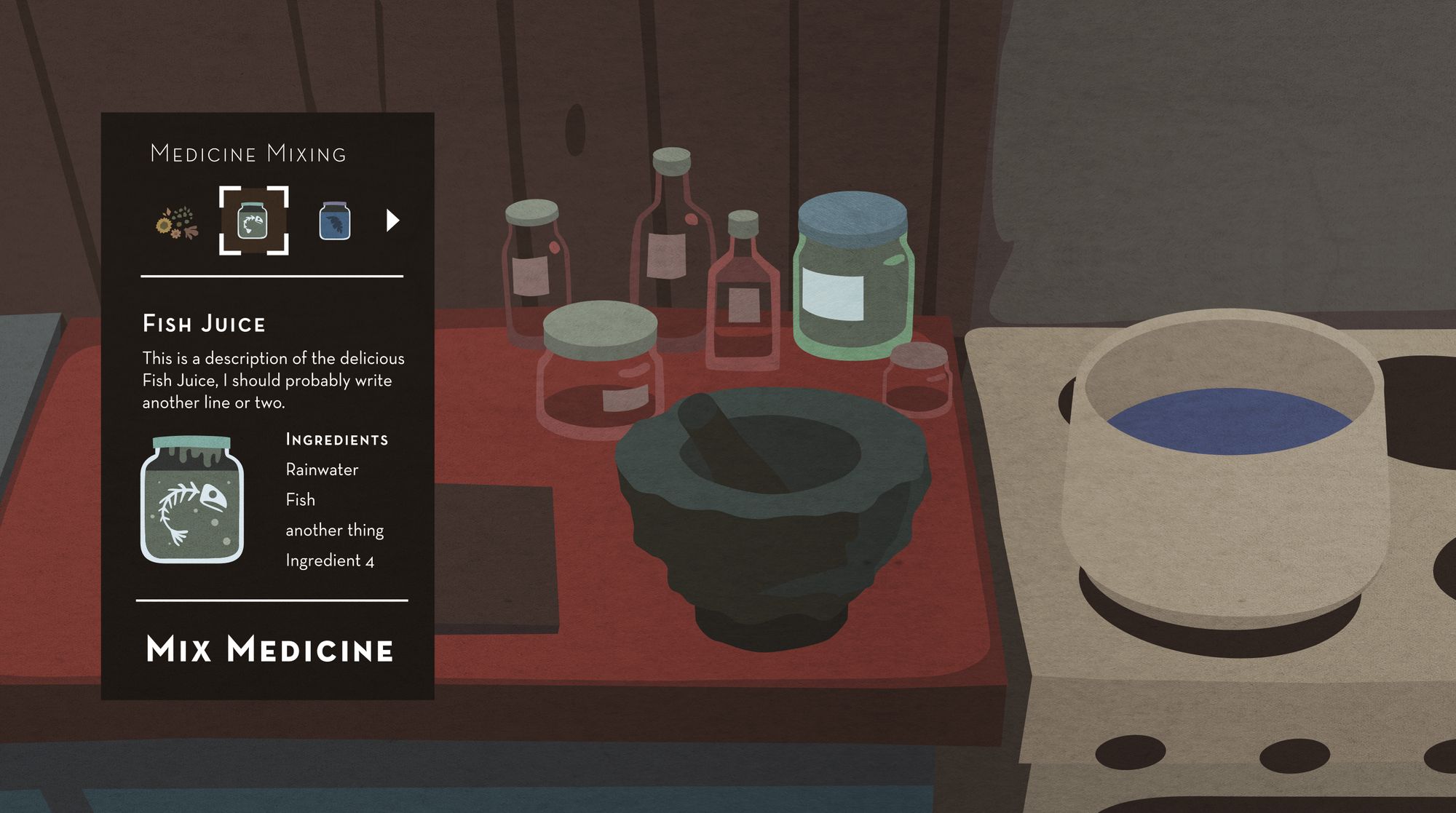
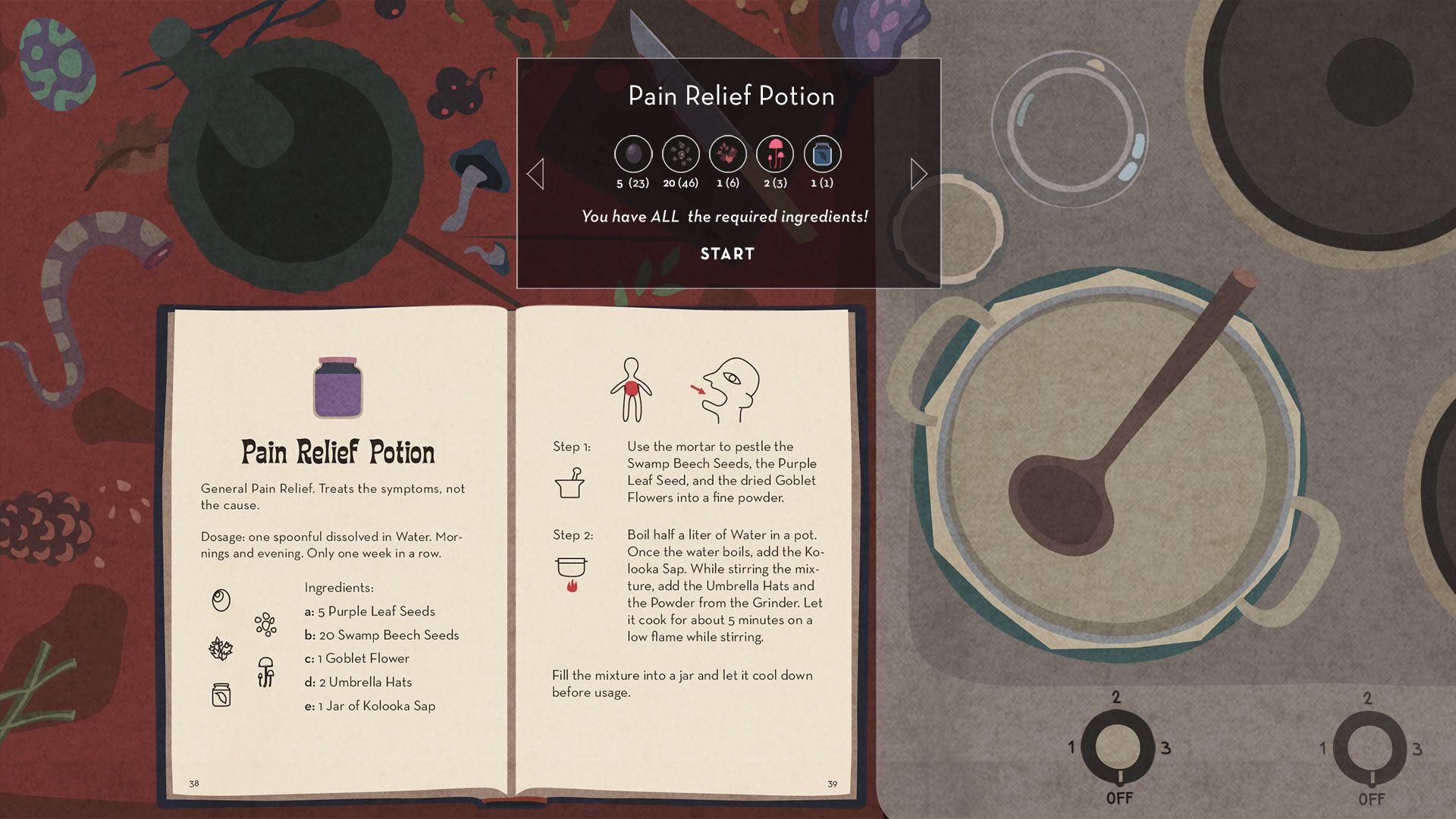
Conclusions
A huge impact of making these changes was that they helped me clear the wood from the trees to really see what story I was telling.
They in particular helped me realise the way to reconcile the colonial assumptions at the heart of the game: scientists visiting a community to exploit it, Nonno’s colonial guilt which helped no one, made no reparations, and was mostly about his own ego. The harm of the past events in Mutazione was about incomers seeing the community and its wealth as a product and not a process. And as something they can pin down. Exploit. That we could make completing the game not about ‘solving’ problems, not about ‘producing’ solutions, and instead focus on a process of healing, of moving through grief, and incorporating recovery into the practice of living together, in the context of one another? That was crucial.
That allowed me to speak the thesis of the way I wanted to tell Nils’ story in the form of the game, which made the conclusion of the plot through the character's speaking much lighter, much simpler, much easier to communicate.
There is a version of this game which is about a harder puzzle-garden experience, where the story takes a secondary seat, and your approach is to see the community through the lens of the gardens and how you can heal in a more literal sense. That’s not a worse game. It’s a different one. With different Creative Directors and Narrative Designers, and a different audience. Sliding doors.
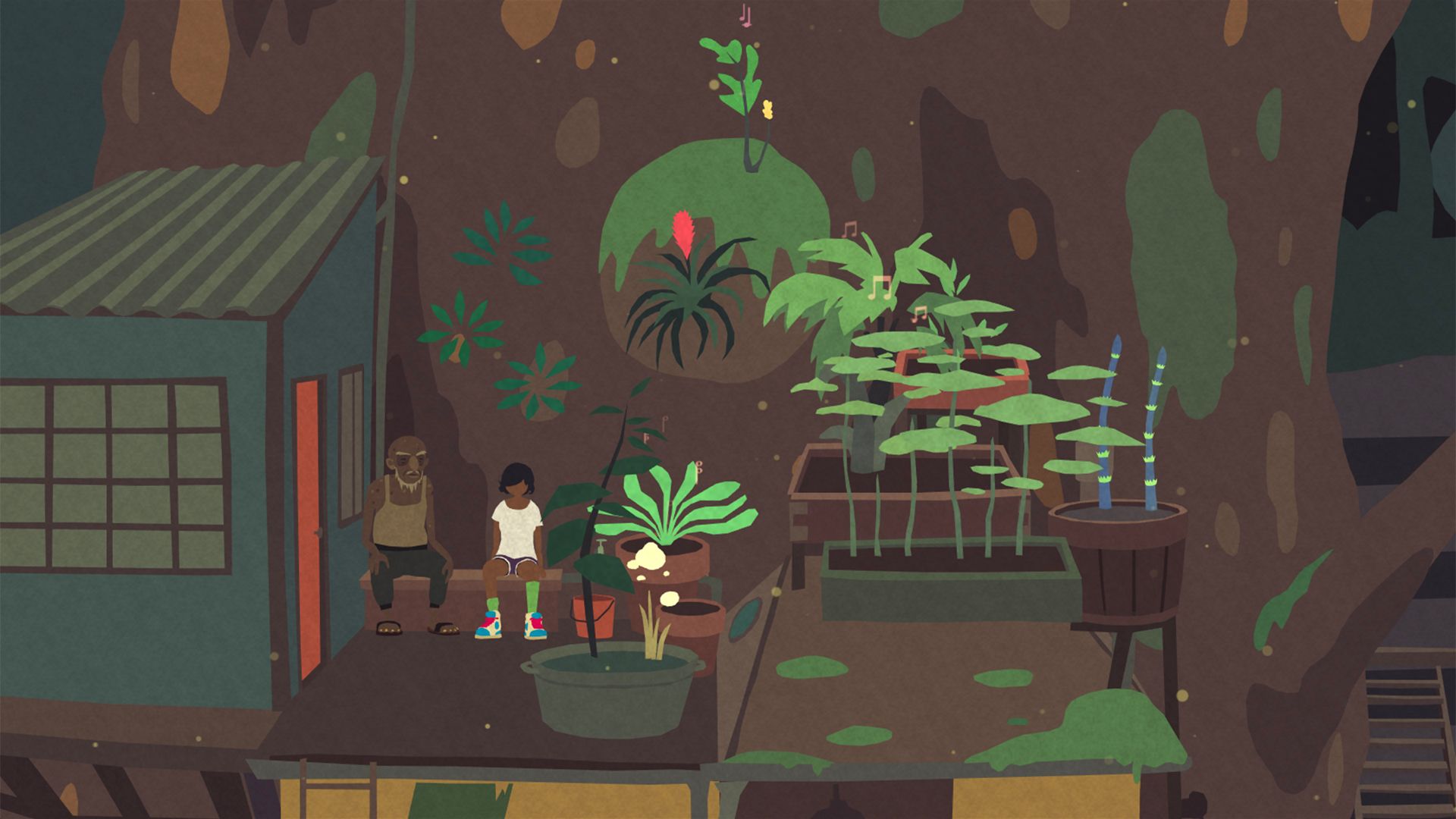
Finally, I thought it might be fun to share something with you. I’ve made a public copy of the design documentation I made following the meeting. It’s a 4 page design proposal which sets out the context, the key decision, a structure for the design of the gardens and how to connect them more crucially to the community of characters, and a series of notes about what other design changes should follow.
It ends with a timescale for implementing the design and writing of the story on this basis - one that I wasn't so far off, bearing in mind later developments around us adding a new platform and 14 more languages in, in early 2019.
It's not a document designed for public consumption but I thought that if you’re interested in what kind of internal documentation gets thrown around in a studio of our size, it’s a good example! Be warned, however, it contains both spoilers AND the design changed after this in small and substantial ways, too. So it’s not definitive either. Just a snapshot from summer 2018, and the way I was trying to document our design decisions as we worked. Notice I haven't cut 2 of the days at the point of this proposal! That will come...

